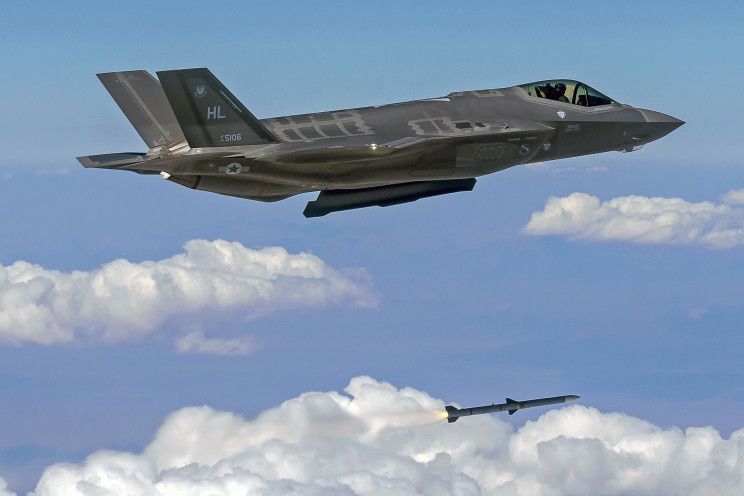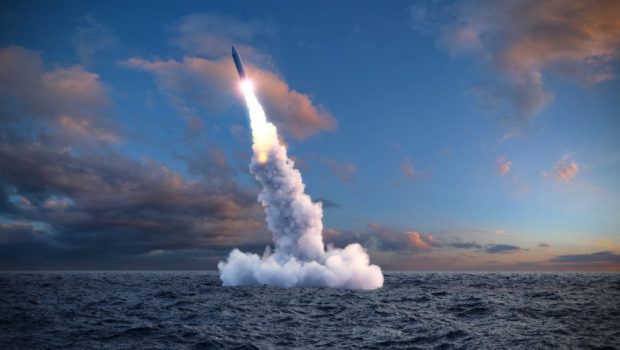What are hypersonic missiles and how does hypersonic weapon technology work?
Hypersonic weapons technology is at the heart of a new arms race. Currently, the US, China, and Russia are all competing to develop the most effective long-range hypersonic missiles. A recent report revealed that North Korea has also successfully tested a hypersonic missile on January 5, 2022, the country's second reported test of a hypersonic missile.
The reason why these countries are showing great interest in hypersonic missile technology is that these advanced weapon systems are capable of long-distance attacks without being detected by defense systems such as radar and missile shields. Moreover, hypersonic missiles can travel at a speed of more than 3,850 miles per hour. The technology looks very promising on paper but is it easy to achieve hypersonic speed in reality?
What does hypersonic mean?
Hypersonic (literally "excess speed"), in relation to missiles, refers to missiles that can fly long distances through the atmosphere at speeds greater than five times the speed of sound, or faster than Mach 5
In aerodynamics, the speed of objects is generally calculated with respect to the speed of sound, and different prefixes like sub, super, hyper are used for specific speed ranges. The speed of sound changes depending on the medium in which it is traveling and the temperature of that medium. The temperature depends on the altitude; for standardization purposes, if we assume the altitude to be at sea level, dry air, and a temperature of 20°C (68 °F), the speed of sound comes out to be around 761 mph. This speed is called the local speed of sound or Mach 1.
A Mach number is the ratio of a speed to the speed of sound, so a speed of 1522 mph would have a Mach number of 2, and it will be called Mach 2 speed. Flight regimes are defined based on the Mach number (Ma), so subsonic means Ma < 1, transonic means Ma = 1, the speed range between Mach 1 and Mach 3 is supersonic, and the speed above Mach 5 is called hypersonic.
What makes hypersonic missiles so fast?

Any missile that can travel at a speed greater than Mach 5 (or five times the speed of sound) is called a hypersonic missile. There are mainly two types of hypersonic missiles - a hypersonic cruise missile, which is powered by engines throughout its flight, and a hypersonic boost-glide missile, which is boosted to hypersonic speeds by rockets and then glides through the atmosphere to reach its target, using lift from the airflow to maneuver.
The Hypersonic cruise missiles would be powered by special scramjet (Supersonic combustion ramjet) engines, which are still in development. Scramjets operate by burning fuel in a stream of supersonic air that is compressed by the forward speed of the aircraft, and unlike conventional jet engines, scramjets have no moving parts. Currently, countries that have tested scramjet engines include Russia, with the 3M22 Zircon, the USA, with the HAWC, India's HSTDV, and China.
Hypersonic gliders are placed atop a ballistic missile booster or a short-term rocket system and boosted to speeds as high as Mach 20. Then they detach and travel at hypersonic speeds, mostly through the atmosphere using the lift generated by airflow to stay aloft and maneuver. This type of hypersonic missile is more common; the hypersonic boost gliders DF-ZF of China and Avangard of Russia are already in service, whereas the US Army is also working on its Common Hypersonic Glide Body (C-HGB).
A brief history of hypersonic missiles
Artificial objects flying at hypersonic speeds are not a new technology. In the late 1930s Austrian engineer, Eugen Sänger and German physicist Irene Bredt designed a hypersonic glider called the Silbervogel, but it was never built.
The two-stage Bumper rocket, which Americans had assembled in 1949 from a captured German V-2 (equipped with a WAC corporal sounding rocket) had achieved hypersonic speed during reentry for a short time before blowing up.
1961 was the first time a human - Yuri Gagarin achieved hypersonic speed during his historical orbital flight. Two more people - Alan Shepherd and Robert White- joined the hypersonic club within a year. However, all of them traveled at hypersonic speeds for very short durations. In 1959, the US awarded the design contract for the Dyna-Soar hypersonic glider to Boeing, but in 1963, the government abandoned the project for unknown reasons. Research in hypersonic flight continued but it was technically challenging.
On August 20, 1998, the US Navy came to know that terrorist Osama bin Laden (who bombarded American embassies in Kenya and Tanzania on August 7 the same year) was hiding at an al Qaeda camp in Afghanistan. The Navy ships soon launched cruise missiles towards Bin Laden’s camp from the Arabian Sea. Though the missiles destroyed the camp, unfortunately, Laden survived. One reason may have been that the missiles took two hours to reach the target, which was 1100 miles away. Later, Bin Laden caused the horrendous 9/11 attacks in the US that shook the entire world. Soon after the attacks, US President George W. Bush considered, but later rejected, the development of a hypersonic conventional missile for its Prompt Global Strike system. At the same time, the US withdrew from the Anti-Ballistic Missile treaty and began developing defensive shields against ballistic missiles. Russia and China, fearing the shields would defeat their ability to deter an attack, began to develop ways to defeat the shields, including the use of hypersonic missiles.
The two main factors that rekindled the interest in hypersonic missiles were their speed and maneuverability. According to Bob Strider, who is the Hypersonics chief at the US Army Space and Missile Defense Command, hypersonic missiles are meant to target the anti-access and area denial measures deployed by a country, he believes, “It's really meant to kick the door open, and then allow other assets to come in.”
The conventional intercontinental ballistic missiles are capable of hypersonic speeds, but they follow a predictable parabolic trajectory and are easier to track and intercept. Hypersonic missiles on the other hand, according to the Congressional Research Service, approach very rapidly at low altitudes, and so are much more difficult to track and so are very difficult to take down.
Hypersonic technology development programs of the US

While mulling over the Prompt Global Strike (PGS) program in 2003, the US Air Force and DARPA (Defense Advanced Research Projects Agency) launched the FALCON Project to develop the Common Aero Vehicle (CAV). The CAV was supposed to work as a conventional ballistic missile as well as a hypersonic reentry vehicle, but after two failed tests in 2010 and 2011, this project was shelved.
In 2008, as part of the FALCON program, DARPA started working on Hypersonic Test Vehicle (HTV-2), a successor to the CAV. Unlike the spherical CAV, the HTV-2 was shaped like a wedge. In two different tests in 2010 and 2011, although successful in the launch, separation from the booster and starting the aerodynamic flight, the actual glider itself failed to complete its flight. Finally, in 2018, the DOD announced that the department wouldn’t conduct any further tests of the HTV-2.
For some time in 2010, DARPA also worked on a new design under the ArcLight Program, but the project was terminated in 2012. In 2010, the US was also testing a hypersonic cruise missile, the Boeing X-51 that was powered by a jet engine, but this program too ended in 2013 without delivering any promising results.
However, amidst the series of setbacks faced by the US, one project concerning hypersonic technology turned out to be successful. In 2006, the US Army had started working on another hypersonic glider - the Advanced Hypersonic Weapon (AHW). This glider had a conical design, and the Army conducted a successful test in 2011 using the same. Though AHW failed to meet the expectations during the second test conducted by the Department of Defense (DOD) in 2014, the final test conducted in 2017 using a scaled version of AHW turned out to be a success. In 2018 AHW was renamed as Common Hypersonic Glide Body (C-HGB). The Pentagon hinted that this would be deployed as the common hypersonic glide vehicle for the US Army, Navy, and AirForce.
Why is developing hypersonic weapons so challenging?
It is crucial to manage the atmospheric drag during the development of a hypersonic weapon. As the weapon pushes through the air, it faces resistance proportional to its speed. Drag slows down the weapon, and it is particularly problematic in gliders as any engines do not power them.
Drag also contributes to increasing the temperature of the aircraft as well as the surrounding air. This heating can be so intense at hypersonic speeds that it can cause the surrounding air to ionize and become chemically reactive. This ionized air can degrade the weapon’s surface. Moreover, an object flying faster than the speed of sound generates a moving layer of dense air known as a shock wave. At hypersonic speeds, this shock wave makes a very narrow-angle with the weapon’s direction of motion and almost hugs the weapon, forcing the high temperature chemically unstable air to come in close contact with the weapon’s surface. These factors threaten the weapon’s integrity and thus pose significant challenges for designing hypersonic missiles.
Also, although maneuverability is an important requirement for a powerful hypersonic missile, low lift and high drag can hamper this ability. Maneuvers can be costly because changing the direction of an object flying at hypersonic speed will use up an enormous amount of the object’s kinetic energy, in turn slowing the object down. Bob Strider explains, “Any maneuvers you make bleed off energy because you’re not powering the glider, so you have to be careful how many maneuvers you can make so you can manage the energy that’s in it to make sure you can get to the target you want to."
Challenges in making hypersonic missiles mean that the country that develops high-quality hypersonic missiles first, will have a headstart in this new-age arms race for hypersonic weapons. All the major players in this weapon race have had some success in developing a boost-glide missile as well as testing their scramjet technologies. However, China, North Korea, Russia, and the US are the only countries that have successfully tested a hypersonic cruise missile. It remains to be seen how other countries catch up, and also, how the non-proliferation of hypersonic missiles will be approached.








Gloss